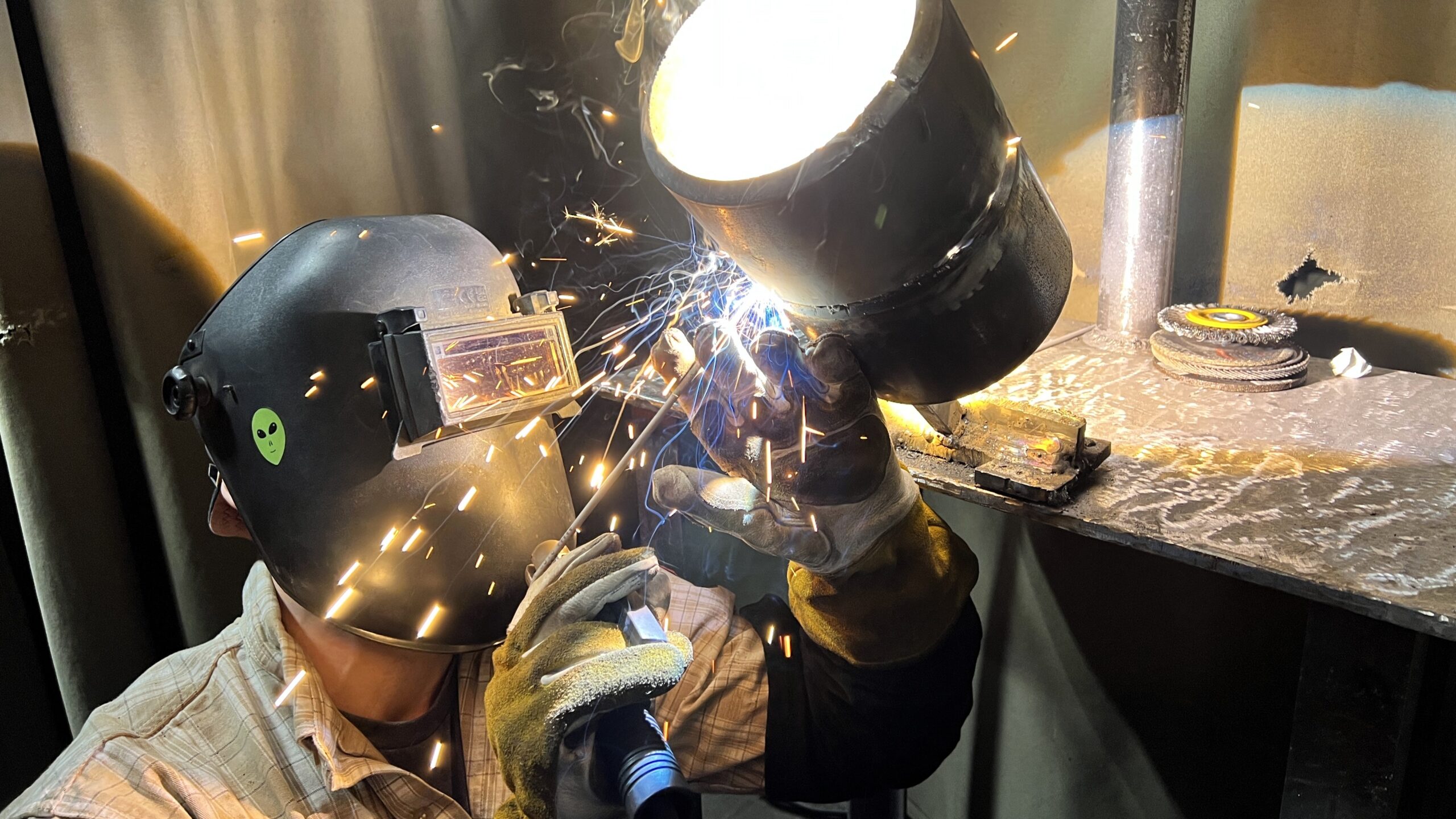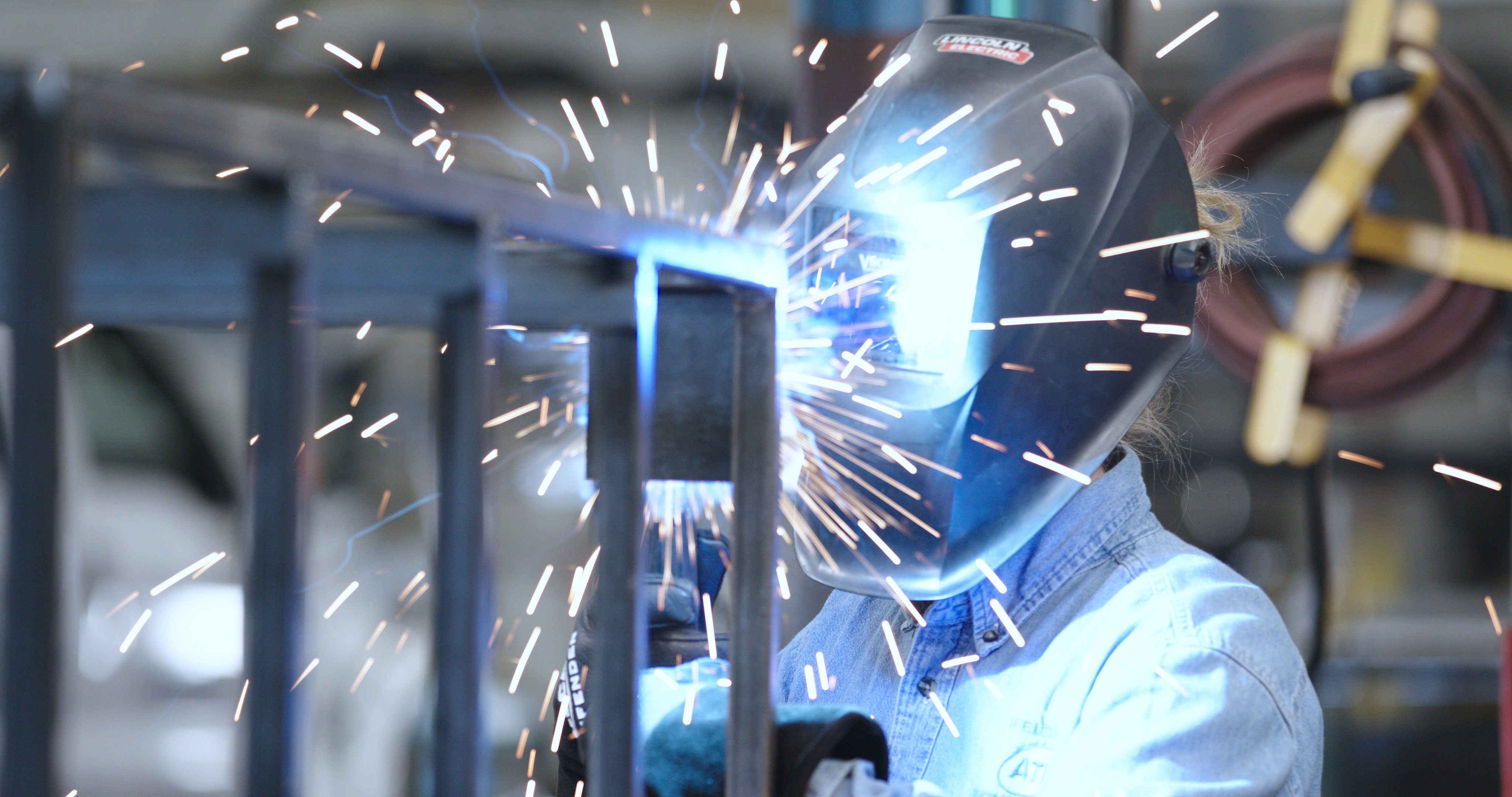All Regarding Welding: Secret Insights Into Techniques and Finest Practices for Success
Welding includes a range of methods, each matched for specific products and applications. Understanding these approaches, such as GMAW, SMAW, and TIG, is crucial for attaining ideal outcomes. In addition, the appropriate tools and safety and security practices can not be neglected. As preparation and fixing play important roles in the welding procedure, understanding these aspects can considerably improve the quality of the end product. What are the key factors that ensure a successful weld?
Recognizing Various Welding Techniques
Welding strategies include a variety of approaches, each fit to particular applications and materials. Among one of the most typical techniques are Gas Steel Arc Welding (GMAW), Shielded Steel Arc Welding (SMAW), and Tungsten Inert Gas Welding (TIG) GMAW, also referred to as MIG welding, is prominent for its rate and convenience, making it excellent for thin products. SMAW, or stick welding, is favored for its simpleness and performance in outside environments, specifically with thicker metals. TIG welding uses accuracy and control, making it suitable for complex work and non-ferrous metals (Montana Mobile Welding and Repair Welding). Each strategy has its distinct benefits and factors to consider, allowing welders to pick the best technique based upon the project's demands, product kind, and desired results. Recognizing these techniques is crucial for successful welding
Important Welding Devices and Devices
While numerous welding strategies require particular abilities, the appropriate equipment and tools are just as essential for attaining quality outcomes. Important welding devices includes welding makers, which differ depending on the technique-- such as MIG, TIG, or stick welding. Safety gear, consisting of gloves, headgears, and aprons, guarantees safety and comfort during the process. In addition, clamps and fixtures aid secure materials in place, making certain precision in welds. Consumables like welding poles, cord, and shielding gas are also critical parts that affect the high quality of the weld. Additionally, tools such as grinders and cutters promote surface area prep work and post-weld completing, contributing to a specialist end result. Spending in high-quality tools ultimately boosts the effectiveness and effectiveness of welding tasks.
Safety And Security Practices in Welding
Appropriate safety practices are essential in the welding sector to secure employees from prospective risks. Welders have to wear ideal individual protective tools (PPE), including helmets with correct shading, gloves, and flame-resistant apparel. Ample ventilation is essential to minimize direct exposure to unsafe fumes and gases produced throughout the welding procedure. Additionally, workers need to be learnt the proper handling of welding tools to stop mishaps. Fire safety measures, such as maintaining flammable materials away from the welding location and having fire extinguishers easily available, are required. Normal examinations of equipment and offices can assist recognize possible dangers before they bring about accidents. By sticking to these security methods, welders can develop a safer working setting and decrease risks connected with their trade.
Preparing Products for Welding
Preparing products for welding is a crucial action that significantly affects the top quality and integrity of the end product (Belgrade). Correct prep work includes cleaning up the surfaces to remove pollutants such as oil, dirt, and rust, which can compromise the weld. Techniques such as grinding, sanding, or using solvents are commonly utilized to achieve a tidy surface area. Additionally, guaranteeing that the materials mesh snugly is vital; gaps can lead to weak welds. It's also essential to take into account the alignment and positioning of the parts, as this will certainly impact the simplicity of welding and the final result. Lastly, selecting the ideal filler product and making sure compatibility with the base metals is essential for achieving solid, long lasting welds
Tips for Achieving High-Quality Welds
Accomplishing high-quality welds needs focus to detail and adherence to ideal techniques throughout the welding process. Correct joint preparation is vital, making certain surface areas are tidy and cost-free from impurities. Selecting the proper filler product and welding technique based on the base steels is important for perfect bonding. Keeping consistent travel rate and angle while welding can protect against defects and promote uniformity. In addition, regulating heat input is vital; too much warm can bring about bending and compromised joints. If required, on a regular basis checking the welds throughout the procedure enables for instant changes. Finally, employing appropriate post-weld treatments, such as cleaning and stress alleviation, can boost the longevity and honesty of the weld, inevitably making certain an effective end result.
Repairing Typical Welding Issues
Welding commonly offers obstacles that can impact the high quality and integrity of the final item. Typical problems such as porosity, irregular weld grains, and overheating can arise, each needing Your Domain Name particular troubleshooting strategies. Recognizing these issues is vital for welders to boost their abilities and achieve ideal results.
Porosity Problems Clarified
Porosity can usually be ignored, it remains a critical problem in welding that can compromise the stability of a finished item. Porosity refers to the existence of small gas pockets within the weld grain, which can lead and deteriorate the joint to early failure. This trouble usually arises from pollutants, dampness, or improper protecting gas insurance coverage during the welding procedure. To minimize porosity, welders must that site validate that the base materials are dry and tidy, utilize suitable securing gases, and keep consistent welding specifications. On a regular basis inspecting the equipment and atmosphere can likewise aid recognize prospective problems prior to they show up in the weld. Dealing with porosity properly is essential for achieving strong, sturdy welds that fulfill quality requirements.

Irregular Weld Beads
Inconsistent weld grains can substantially affect the quality and toughness of an ended up item. Various elements add to this concern, consisting of improper traveling rate, incorrect amperage setups, and inconsistent electrode angles. When the welder relocates as well quickly, a grain may appear slim and do not have penetration, while relocating as well gradually can trigger too much accumulation. Additionally, making use of the wrong amperage can cause either undercutting or too much spatter, both of which compromise weld honesty. The welder's strategy, such as inconsistent lantern movement, can also bring about uneven bead look. To mitigate these issues, welders ought to concentrate on preserving stable, controlled activities and making sure correct equipment settings to attain harmony in their welds. Consistency is essential to achieving reputable and solid welds.
Getting Too Hot and Warping Issues
Excessive heat during the welding process can lead to considerable getting too hot and contorting problems, impacting the architectural stability of the workpiece. These troubles commonly manifest as distortion, which can endanger placement and fit-up, making further assembly challenging. Aspects adding to overheating include the choice of welding parameters, such as voltage and travel rate, along with the type of material being bonded. To reduce these concerns, welders ought to maintain constant travel speed and proper warmth input while keeping track of the work surface temperature level. Furthermore, pre-heating or post-weld heat treatment can assist minimize stress and anxieties brought on by fast cooling - Montana Mobile Welding and Repair Belgrade Welding. Regular assessment and adherence to ideal techniques are vital in avoiding getting too hot and making certain the long life and reliability of welded structures
Frequently Asked Questions
What Are the Profession Opportunities in the Welding Industry?
The welding market provides diverse occupation chances, including positions as welders, designers, examiners, and educators. Professionals can work in production, construction, aerospace, and auto markets, gaining from solid demand and affordable salaries in different duties.
Just How Can I Enhance My Welding Rate Without Sacrificing Quality?
To boost welding speed without giving up top quality, one must exercise effective techniques, keep equipment, maximize settings, and enhance hand-eye sychronisation. Normal training and seeking feedback can likewise significantly add to attaining faster, top notch welds.
What Accreditations Are Available for Welders?
Countless certifications exist for welders, including those from the American Welding Culture (AWS), the National Center for Building And Construction Education and Research Study (NCCER), and various industry-specific companies. These qualifications improve employability and show skill proficiency.
Just How Does Welding Impact the Characteristics of Metals?
Welding influences the homes of steels by altering their microstructure, which can result in modifications in strength, ductility, and hardness. Heat input and cooling rates Learn More during the process greatly affect these material qualities.
Can I Bonded Dissimilar Metals With Each Other?
